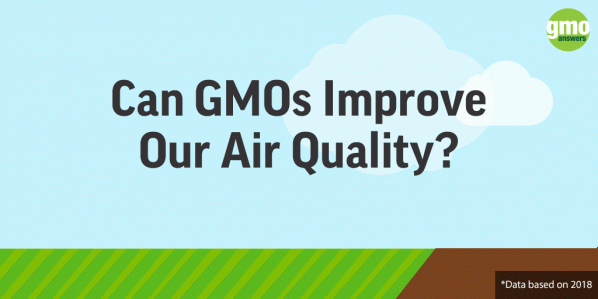Question
How can adding a lot of toxic poison (pesticides) to the ground be good?
Submitted by: GMOsux
Answer
Expert response from Andrew Kniss
Associate Professor of Weed Ecology & Management, Department of Plant Sciences at the University of Wyoming
Friday, 13/09/2013 19:19
To really address this question, it is important to put “toxic poison” into perspective. It is true that pesticides are, by definition, toxic. But toxicity is relative; recall the old adage that the dose makes the poison. What may be a “toxic poison” to one species may actually be quite safe, and even a food source, to another. For example, chocolate is a toxic poison to dogs, but a nice treat to us. Pesticides should be considered in a similar context. Even though a pesticide is a toxic poison to the target pest (be it a weed, insect, or plant pathogen), the toxicity of most pesticides is quite different for other organisms.
The most common pesticides incorporated into GM crops are proteins that originate from Bacillus thuringiensis, commonly referred to as Bt crops. The nice thing about Bt proteins is that they are very specific about the types of organisms they are toxic to. The crops have been engineered to produce a Bt protein that is toxic only to certain types of insect pests (usually Coleoptera and Lepidoptera) that feed on the plants. This greatly reduces non-target impacts by exposing only insect pests that feed on the crop. These Bt proteins are practically non-toxic to humans and other mammals. It has been well documented that the use of Bt crops has actually reduced pesticide spraying. So, in the case of GM Bt crops, we have actually reduced the application of insecticides to the soil.
Herbicide-resistant crops, on the other hand, do not produce their own pesticide, but instead are developed to be resistant to effective herbicides. GM versions of herbicide-resistant crops include glyphosate-resistant and glufosinate-resistant varieties. These herbicides were designed to be “toxic poisons” to the weeds in the field, but they are substantially less toxic to most other organisms in the system. Specifically, glyphosate is less toxic to rats (the most common model for mammalian toxicity) than cinnamon oil or clove oil (two organically approved herbicides). Glyphosate is also less toxic to rats than many chemicals humans commonly consume, most notably table salt and caffeine.
Once applied, a vast majority of pesticides do not remain in the environment indefinitely. There are some notable exceptions that tend to persist for a very long time in the environment (such as DDT), but most pesticides currently used in agriculture degrade relatively rapidly. Many pesticides are degraded by microorganisms that live in the soil. These soil microorganisms basically use the pesticides as a food source, breaking the pesticide down into chemicals that no longer have pesticidal activity; that is, they are broken down into things that are often no longer “toxic poisons.” Glufosinate, for example, has a soil half life between 3 and 70 days. This means that under most circumstances, glufosinate will be almost completely degraded one year after application. There will certainly be exceptions to this, particularly in soils where microbial activity is already low (like sandy soils with low organic matter). But overall, most pesticides currently used in modern agriculture (and particularly those associated with GM crop production) break down relatively quickly and have far fewer non-target impacts than many pesticides used in the past.
How Do GMOs Benefit The Environment?



